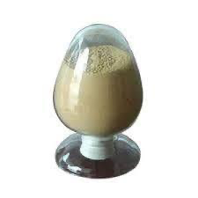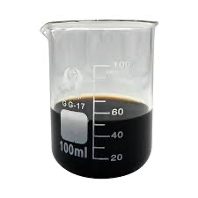Acid Xylanase
- Home
- Products & Applications
- Acid Xylanase


Acid Xylanase
Description:
Acid Xylanase is obtained by submerged fermentation of Trichoderma reesei; it is widely used in the manufacturing of baked goods, brewing and alcoholic beverages, feed, and wheat products.
Technical information:
- Available in liquid form (black/brown; 50,000 and 100,000 iu/ml.) and also in powder form (white to gray; 50,000; 100,000 iu/gr). Food grade quality 290,000 iu/gr.
- Temp range: 30 to 65℃ (Optimum temp: 40-60℃).
- pH range: 3.0-7.0 (Optimum pH: 4.8-5.5)
- Unit definition: One unit will release 1 μmol of reducing sugar measured as xylose equivalents from oats xylan 10 mg/ml per min at a of pH 4.8 at 50℃.
Mode of Action:
Acid Xylanases are hydrolases that breakdown xylan, the second most abundant polysaccharide, into Xylo-oligosaccharide and xylose. Acid Xylanases are used in animal feed, for the manufacturing of bread, food and alcoholic drinks, textiles, bleaching of cellulose pulp, and xylitol production.
Uses:
- Baking
Acid Xylanases are often used to improve cereal processing to improve product quality. In wheat, Acid Xilanase helps in separating wheat gluten from starch thus, increasing gluten and starch yield and purity. In combination with Fungal-α-Amylase or refined α-Amylase, Acid Xylanase, will have a synergistic effect. - Recommended dosage: 0.02 to 0.15 kg/t based on 290,000 iu/gr.
- Feed
In poultry, improves feed conversion ratio (FCR) as a result of a better digestibility. In corn and soy diets, it has a synergistic effect when used in combination with glucanase.
Recommended dosage: 0.01-0.05 kg/ton raw material. Based on 10,000 iu/g. - Beer, sake, wine
Acid Xylanase will breakdown starches into sugar through saccharification in wheat beer and during the squeezing process in the manufacturing of fermented beverages such as sake and wine.
A synergistic effect occurs when used with β- glucanase or neutral protease.
Recommended dosage: 0.1 to 0.5 L/ton. - Fruit juice
Acid Xylanase diminishes the turbidity caused by polysaccharides normally present resulting in the clarification of the juice. Best results are obtained when used in conjunction with pectinase and α-Amylase.
Recommended dosage: 0.1 to 0.2 L/ton based on 5,000 iu/ml. - Xylo-oligosaccharides (XOS)
Acid Xylanase can be used in the production of XOS, a prebiotic known as the “Super Bifidus Factor” which is obtained from the hydrolysis of corncobs.
Recommended dosage: 0.2 to 0.4 L/ton on dry basis at 50,000 iu/ml
Packaging, Storage & Handling
- Liquid: Plastic drums of 22; 200; 840 and 1,000 L.
- Powder: 20 kg cartons; 25 kg bags and 25 kg drums.
- Storage & handling: Due to its organic nature, high temperature, strong acid & strong alkaline conditions will inactivate the enzyme.
- Avoid exposure to sunlight, keep in clean, cool, and dry place
